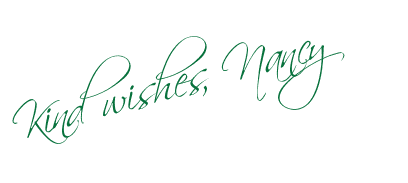A few of you have have asked me about the story of transferware so I'm reposting this article I published in February....plus my camera is broken so it will be a couple of days before I get it back from the shop!
Although John Brooks, an Irish engraver is credited with having the first patent for the transferware printing technique in 1751, it was John Sadler and Guy Green of Liverpool, who independently discovered the process, who are credited with perfecting the technique in 1756. If you’re a transferware buff, you may already have known this as the names John Sadler and Guy Green are often associated with the early onset of transfer printing. However, did you know just how Sadler and Green came up with the idea? Do you know their history? I bet you’d be amazed to know that Benjamin Franklin made claims to having his finger in the inventive pie of the transfer printing process. Interested? Well, read on.
Although John Brooks, an Irish engraver is credited with having the first patent for the transferware printing technique in 1751, it was John Sadler and Guy Green of Liverpool, who independently discovered the process, who are credited with perfecting the technique in 1756. If you’re a transferware buff, you may already have known this as the names John Sadler and Guy Green are often associated with the early onset of transfer printing. However, did you know just how Sadler and Green came up with the idea? Do you know their history? I bet you’d be amazed to know that Benjamin Franklin made claims to having his finger in the inventive pie of the transfer printing process. Interested? Well, read on.
John Sadler was the son of Adam Sadler. Adam found himself interested in the typographical arts while being quartered with a printer when serving his time as a soldier during the wars in the Low Countries. After his active duty, Adam Sadler married a Miss Bibby and shortly thereafter opened up shop as a printer in the New Market at Liverpool using the skills which he had honed during his time spent in the Low Countries. Adam, apparently, was also known to be a good musician and made the printing of music and loose ballads his specialty.
One of Mr. Sadler’s loyal customers, a poor urchin by the name of Guy Green, who, when he had a penny to spare, would visit Mr. Sadler and buy a ballad. Mr. Sadler befriended Guy upon realizing he was a sharp young lad and took him into his service. The two developed a father–son type of relationship which continued on and eventually Guy succeeded his benefactor in the print business. Adams son, John, born around 1720, was apprenticed as an engraver and opened his own shop in 1748 which was very successful. In fact, John’s shop was so successful that envious shop owners, on the grounds of a very old regulation that only freeman of the town be permitted to keep shop, asked the Corporation of Liverpool to remove him. Sadler was able to defend his business against the Corporation, proving they did not have the right to the outdated law that would shut him down. The lawsuit drew attention and, as a result of Sadler’s victory, many outsiders to Liverpool set up shops which ultimately furthered prosperity there.
Like his father, John was a kind man who showed compassion to the less fortunate. He would give extra prints he had to the children living nearby who would in turn go the local potteries and ask for the ‘wasters’ which were broken or un-saleable pots and pottery. The children would affix the prints to the pottery and use them as decoration in doll houses and play. When John saw the decoration he wondered, “What if pottery could receive an impression from a wet print, and then be fixed by firing afterwards”. This thought sparked what would later come to be known as one of the greatest stories of mass production ever. John, who had apparently developed a close relationship with Guy Green, probably like that of brothers, upon envisioning the idea of a piece of pottery with a print upon it, immediately and confidentially called on Guy Green to explore the possibilities of his new idea.
John and Guy first chose tiles to print on and after seven years of experimentation, had nearly perfected the process. Tiles were chosen because they were flat which made them easy to print on, and Liverpool had developed a competitive market with Holland for producing tiles that almost universally decorated the hearths and chimneys of the time. The two men claim to have printed upwards of 1200 tiles in a six hour period, using copper plates.
Soon, the famed Josiah Wedgwood entered into a business agreement with Sadler and Green and sent thousands upon thousands of pottery pieces to their factory to be transfer printed on his creamware. Shortly thereafter, many English potters, including the great Josiah Spode, began using the transfer printing process.
I like history…it’s like a romantic fairytale but played out and come to fruition, so I’m fascinated by the story of transferware. I am a person of catechism-ic what if’s? What if Adam Sandler had never stayed with a printer during his time as a soldier? What if he had not had a son? What if John’s shop had been closed by the Corporation? What if John was a man of little imagination? I tend to play these questions out in my mind (I do this with ALOT of things) and ponder different outcomes. The one thing I know for sure, regarding transferware, is that it would have ultimately made its mark on history…and my home. In fact, doing some research on the subject, I found this very interesting letter written by Benjamin Franklin in 1773, which in part reads:
"Now, we are speaking of inventions, I know not who pretends to that of copper-plate engraving for earthen ware, and I am not disposed to contest the honour with anybody, as the improvement in taking impressions not directly from the plate, but from printed paper, applicable by that means to other than flat forms, is far beyond my first idea. But I have reason to apprehend that I might have given the hint on which that improvement was made; for more than twenty years since, I wrote Dr. Mitchell from America proposing to him the printing of square tiles for ornamenting chimneys, from copper plates, describing the manner in which I thought it might be done, and advising the borrowing from the booksellers the plates that had been used in a thin folio called "Moral Virtue Delineated," for that purpose * * * Dr. Mitchell wrote me in answer that he had communicated my scheme to several of the artists in the earthen way about London, who rejected it as impracticable".
An early printed blue tile by Sadler depicting a British ship within a border of scrolls and plants below. Circa 1756-61 photo credit: National Maritime Museum
An extremely rare creamware plate by Wedgwood, of which only 15 are known to have been printed, entitled 'The Cock and The Fox' from Aesops Fables. Circa 1770-75
photo credit: britishmuseum.org
EPITAPH IN BOOKISH STYLE
by: Benjamin Franklin (1706-1790)
THE Body
of
Benjamin Franklin
Printer
(Like the cover of an old book
Its contents torn out
And stript of its lettering and gilding)
Lies here, food for worms.
But the work shall not be lost
For it will (as he believed) appear once more
In a new and more elegant edition
Revised and corrected
by
The Author.
SALE
Mention this blog post and receive a 10% discount on any purchase from my Etsy shop now through August 7th! 10% will be refunded to your Paypal account within 24 hours of purchase and is applicable towards the purchase price only (not toward shipping, although I do combined shipping discounts which are figured automatically!)
JUST CLICK THE ENGLISH TRANSFERWARE LOGO BELOW TO BE TAKEN TO MY SHOP.
This offer is good on furniture purchases too!!!




Nancy, You are always such a wealth of information on transferware and I so enjoy reading the history. Thanks for sharing.
ReplyDeletexo, Sherry
Thanks for the history lesson. Great story of relationships that yielded amazing results. Cherry Kay
ReplyDeleteWow, I loved reading this. I am in awe how it all came to be. It's amazing. Thanks for posting this.
ReplyDeleteJust found your blog - I found a flow blue butter dish in a sale, and wanted to learn about it. Thank you for sharing your knowledge, and for all the lovely pictures. Jan (Northants., England.)
ReplyDelete